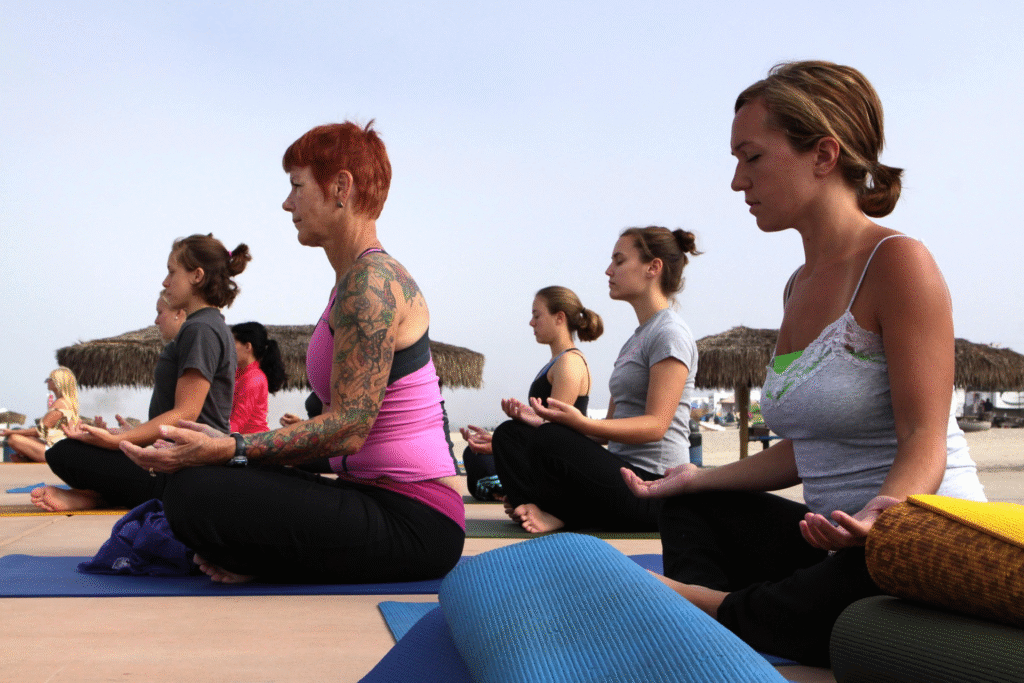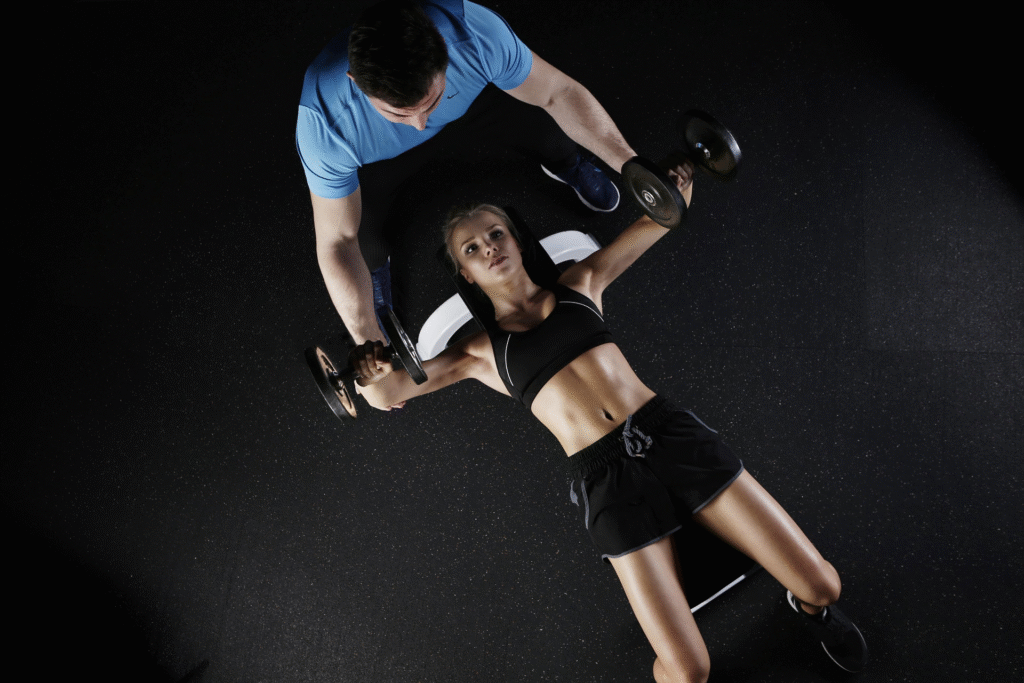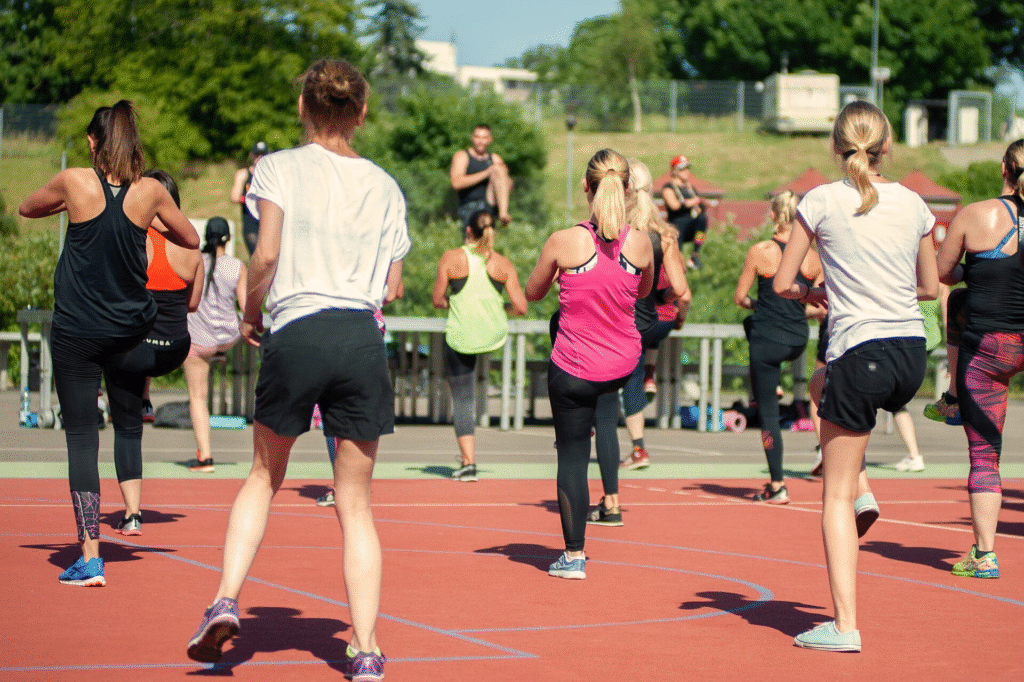Exercise & Fitness For Women Over 40
Table of Contents
- Introduction
- Understanding the Unique Needs
- Physiological Changes and Challenges
- Common Misconceptions About Exercise & Fitness
- Exercise & Fitness Benefits for Women Over 40
- Key Components of a Fitness Program
- Designing a Personalized Fitness Routine
- Exercise & Fitness Selection and Techniques
- Importance of Nutrition
- Lifestyle Factors: Sleep and Stress
- Addressing Common Concerns
- FAQ

Introduction.
Exercise and fitness for women over 40 is more than a lifestyle upgrade, it’s a vital step toward thriving through midlife. For women entering this transformative stage, staying physically active delivers a wide range of health benefits, including increased strength, improved heart rate regulation, enhanced weight loss, and a higher quality of life.
Reaching the age of 40 signifies a significant new chapter in life and introduces a distinct set of challenges and opportunities related to women’s health and fitness. As the body evolves, previously effective routines may require modification. Misconceptions and outdated advice often obscure the path to functional fitness at this stage.
Therefore, understanding these physiological shifts and dispelling myths is essential to crafting a plan that elevates physical health, mental resilience, and quality of life. This guide will support women over 40 in reshaping their fitness journey through strategic workouts, personal assessments, and holistic nutrition.
Understanding the Unique Needs
As women move into their 40s, the body undergoes notable changes in metabolism, hormonal balance, and muscle mass. A tailored approach to fitness becomes crucial, not only for weight control but also for long-term strength and mobility.
A common fear is that strength training leads to bulkiness. However, for women in this age range, it typically results in improved body composition and tone. Focusing on functional strength training and core exercises supports posture and helps maintain independence later in life.
Hormonal changes can affect how the body responds to food, exercise, and stress. Incorporating exercises that promote joint stability, cardiovascular health, and metabolism—such as walking, swimming, and low-impact strength routines with resistance bands, is critical.

Physiological Changes and Challenges
After 40, women often experience muscle loss, insulin resistance, and shifts in fat distribution—especially around the midsection. These are largely influenced by hormonal changes, including those related to perimenopause fitness.
To combat this:
- Integrate resistance training to preserve lean muscle.
- Emphasise exercises that target joint pain, such as modified squats and core work.
- Focus on blood sugar stability with nutrition strategies.
Hormonal fluctuations, particularly in estrogen and progesterone, can influence sleep, energy levels, and fat storage. Addressing these changes proactively with personalized fitness plans improves resilience and prevents age-related decline in older adults.
According to a study by the NIH, women can lose up to 8% of muscle mass per decade after menopause.
Common Misconceptions About Exercise & Fitness
Myth: Women over 40 should avoid intense workouts due to injury risk.
Reality: With proper form and modifications, most women can safely enjoy a wide range of exercises.
Myth: Weight loss is impossible past 40.
Reality: Targeted low-impact HIIT and resistance routines using free weights and resistance bands can be highly effective.
Myth: Recovery isn’t that important.
Reality: Recovery becomes more critical due to slower healing and hormonal shifts.
Myth: Cardio is enough.
Reality: Cardio alone won’t preserve muscle or bone density. A structured strength training program is essential.
Exercise & Fitness Benefits for Women Over 40

Exercise at this life stage delivers transformative physical and mental benefits:
Metabolism Boost
- Strength training raises resting metabolic rate.
- Lean muscle burns more calories even at rest.
- Interval workouts increase post-exercise calorie burn and help reduce visceral fat.
Bone Density & Muscle Mass
- Postmenopausal women lose up to 8% of muscle mass per decade.
- Bone density exercises such as squats and resistance band training help reduce osteoporosis risk.
- Resistance training stimulates osteoblast activity and supports full body strength.
As noted by Harvard Health, adequate protein intake is vital for maintaining muscle after 40.
Mental Health & Confidence
- Exercise enhances mood via endorphin release.
- It improves sleep, reduces stress, and increases self-esteem.
- Movement builds emotional resilience through consistency and structure
Key Components of a Fitness Program
An effective program should address all aspects of aging and support physically active lifestyles:
- Strength Training (2–4x/week): Bodyweight squats, dumbbell rows
- Cardio (3–4x/week): Walking, swimming, cycling
- Flexibility/Mobility: Stretching, yoga, foam rolling
- Injury Prevention: Warm-ups, joint stabilization, recovery periods
The Arthritis Foundation emphasizes physical activity for long-term joint health and mobility.
Designing a Personalized Fitness Routine

Comprehensive Assessments
Before starting any program, evaluate the following:
- Body composition
- Cardiovascular endurance
- Flexibility/mobility
These benchmarks help track progress and tailor your training.
Personal Training
Personal trainers can:
- Prevent overuse injuries
- Customize plans for functional strength training
- Guide periodization and progression for long-term health benefits
Modifications for Injuries
- For knee pain: Replace lunges with step-ups or leg extensions
- For shoulder pain: Swap overhead presses with front raises
🧮 Calculate Your Calories (BMR + TDEE)
Exercise & Fitness Selection and Techniques
Compound Movements
Multi-joint exercises like deadlifts, squats, and push-ups:
- Save time
- Engage more muscles
- Promote real-world strength
Interval Training and HIIT
- Alternate bursts of high effort with recovery
- Improves cardiovascular health and burns visceral fat efficiently
- It is especially helpful for a metabolism boost after 40
Source: ACE Fitness
Mind-Body Integration
- Yoga & Pilates improve spinal alignment and core control
- Enhances mental clarity and reduces anxiety
- Promotes posture and injury prevention
Importance of Nutrition

Diet becomes a vital tool to:
- Fuel workouts
- Maintain hormone balance
- Support emotional wellness
Key focus areas:
- Protein: 1.6–2.2 g/kg body weight for muscle preservation
- Carbohydrates: Avoid low-carb extremes; support energy and mood
- Balanced meals: Prioritize fiber, omega-3s, calcium, and hydration
[Download Meal Plan Template]
Lifestyle Factors: Sleep and Stress
Sleep
- Improves recovery and hormone balance
- Create a bedtime ritual; avoid screens at least 1 hour before bed
Stress Management
- High cortisol leads to belly fat and poor recovery
- Meditation, walking, and deep breathing support better hormone regulation
Addressing Common Concerns
Fear of Bulking Up
Women over 40 typically lack the hormonal profile to bulk up. Focus on:
- High reps
- Moderate weights
- Restorative practices
Joint Health and Longevity
- Joint-safe workouts prevent pain and improve mobility
- Strengthening surrounding muscles reduces joint strain
- Consider water-based workouts for low-impact conditioning
What is the best exercise routine for a 40-year-old woman?
A balanced routine that includes strength training 2–3 times a week, cardio workouts like walking or cycling, and flexibility work such as yoga or stretching is ideal.
How much exercise should a woman in her 40s do?
Aim for at least 150 minutes of moderate aerobic activity or 75 minutes of vigorous activity weekly, plus two strength training sessions.
Can you reshape your body after 40?
Yes! With consistency in exercise and healthy eating, women over 40 can build muscle, lose fat, and improve their overall physique.
What exercise burns the most belly fat for females over 40?
High-Intensity Interval Training (HIIT), strength training, and brisk walking have been shown to help reduce abdominal fat effectively.
Is it too late to start exercising if I’ve been inactive?
Not at all. Beginning an exercise program at any age can lead to major improvements in health, mobility, and energy.
What is the number one exercise for aging females?
Strength training is often considered the most beneficial as it helps preserve muscle, bone density, and metabolic health.
Is it too late to get fit at 40?
Absolutely not. Many women achieve their best fitness levels after 40 with the right guidance and mindset.
How much weight should a 40-year-old woman lift?
It varies, but starting with light to moderate weights (5–15 lbs) and progressing as strength builds is a safe and effective approach.
“Consistent strength training is the closest thing to a fountain of youth for women over 40.” — Dr. Jane Smith, Certified Women’s Health Physiologist